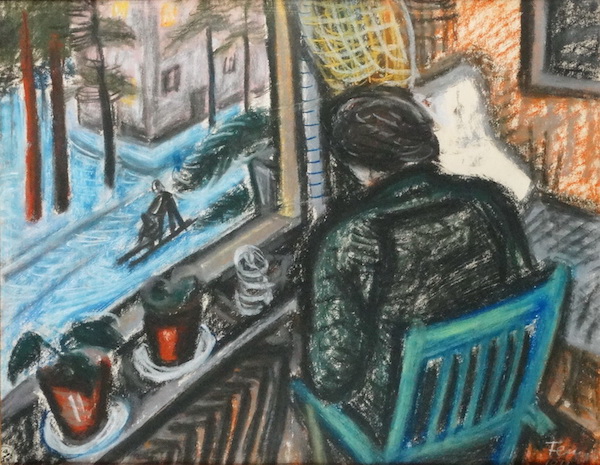Biography
Painter, critic, Munkácsy Prize winner (1959). He first attended the School of Industrial Design, then at the Academy of Fine Arts in Budapest between 1923-1928 where he was a student of Oszkár Glatz and János Vaszary. From 1925, his works appeared in exhibitions. He was a member of the New Society of Artists (KUT), founded in 1924, and then of the UME (Union of New Artists). He worked in the montage group cooperating with the illegal KMP ('Hugarian Communist Party), which produced mobilizing flyers with photomontage and duplicating graphic illustrations. He was one of the founding members of the Group of Socialist Artists founded in 1934. He evoked the atmosphere of factory towns and poor neighborhoods in his pictures.
In 1938, he went to Finland, then settled in Sweden as an emigrant. He lived here until 1947. He slowly made a name for himself. He participated in many exhibitions. At first, his pictures were characterized by a gloomy atmosphere, and then by an increasingly rich richness of color. He returned home in 1948 and became actively involved in artistic public life at home. He worked as a critic of Szabad Nép (1948 — 50), then from 1950 he was a teacher and became the head of the Dési Huber Free School of Fine Arts. For ten years, he was a painting lecturer at the Fine Arts Fund.
From the mid-fifties, Balaton became a defining motif in his art. He painted pictures inspired by nature in his studio in Balatonudvari. He organized his first collection exhibition in 1930 in the salon of Ákos Kovács, then in 1947 at Magy. He presented his pictures made in Sweden at the Free Association of Artists. In 1948, he had a collective exhibition at the Budapest Folklore Center, in 1964 at the Ernst Museum, and in 1969 at the Csók Gallery. His memorial exhibition was held in the Csontváry hall in 1976. His pictures are kept by the MNG and the National Museum in Stockholm. The Magy. People's Republic of Arts Foundation and Magy. He was a founding member of the Association of Fine Artists.

